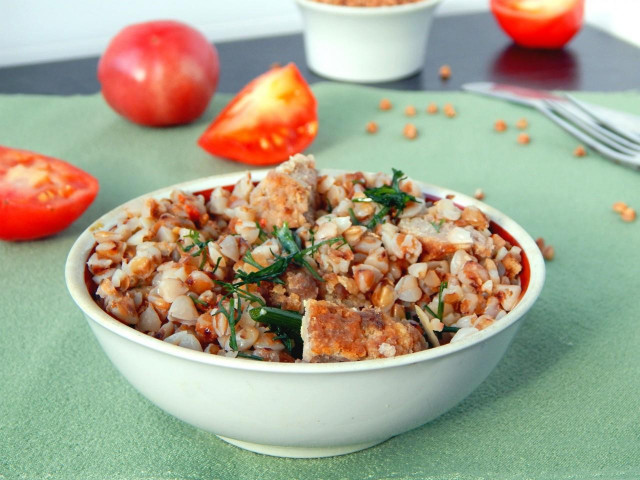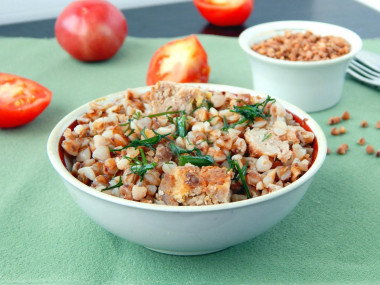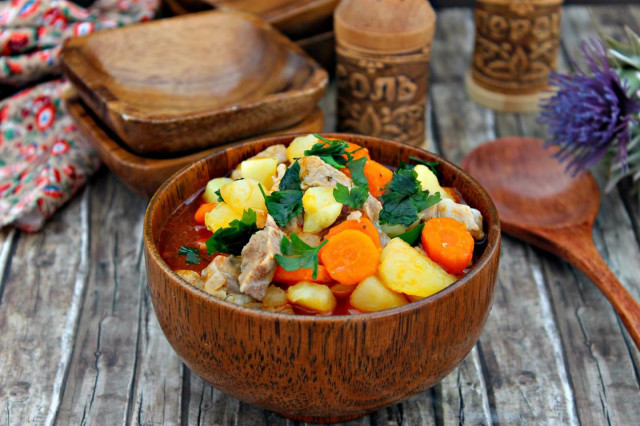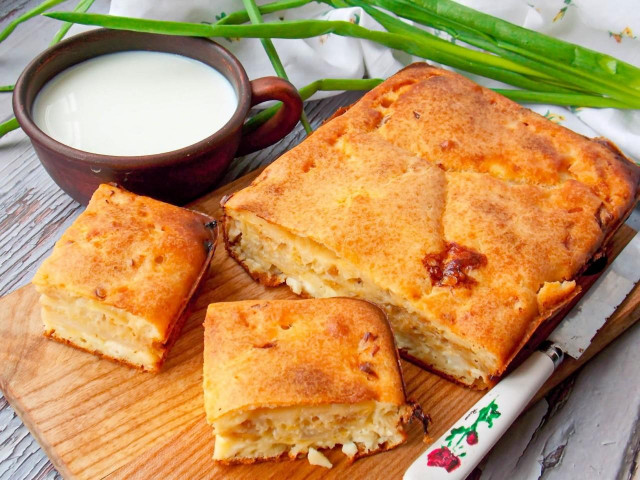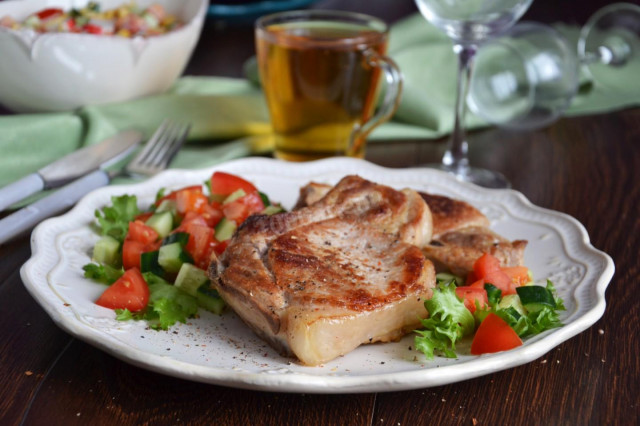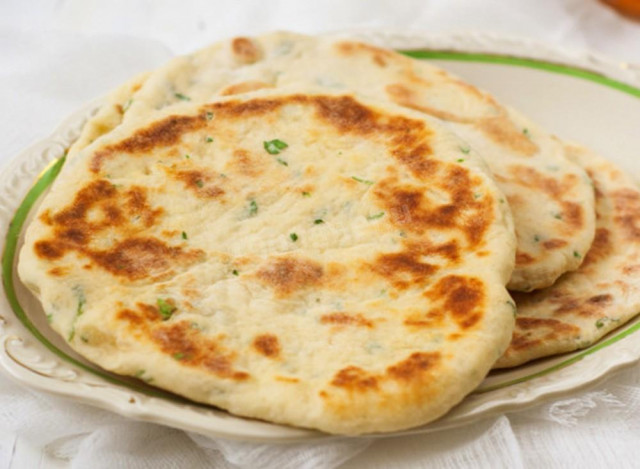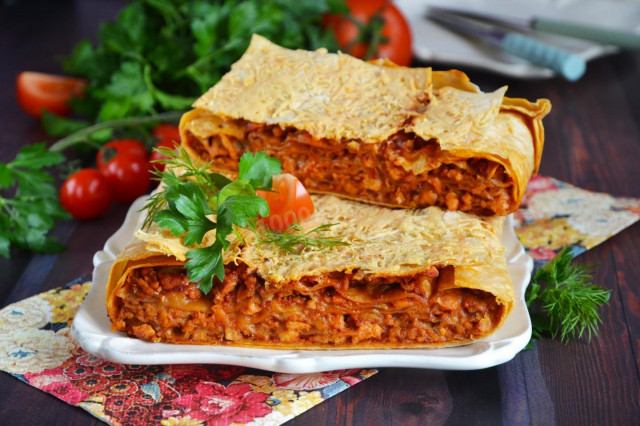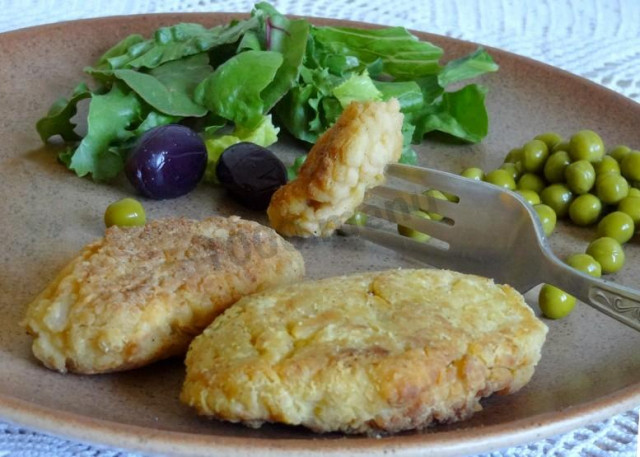Composition / ingredients
Step-by-step cooking
Step 1:
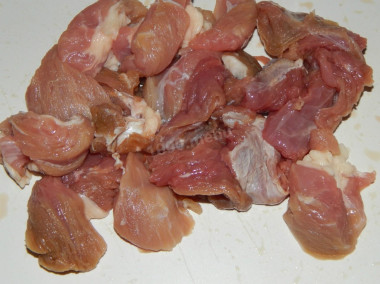
How to make buckwheat porridge with meat?Prepare the ingredients. You can take any meat according to taste and availability. With pork, the dish will turn out to be especially juicy, fatty and high-calorie. Buckwheat is perfectly combined with beef, their proximity in one plate will greatly benefit the body. Chicken will be a lighter and lower-calorie meat component. Defrost the meat, or if you use chilled, rinse thoroughly, remove the veins, fibers.
Step 2:
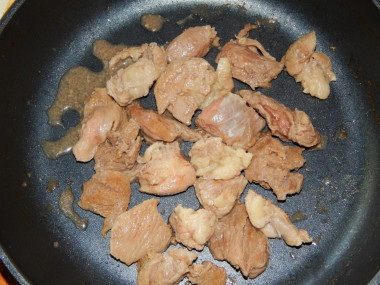
Cut the meat into small cubes. Rinse again, let the water drain from the meat. Peel the onion from the husk, cut it into half rings with a knife. To taste, you can add grated or finely chopped carrots to the onion. But you need to be careful with its amount, otherwise it can give the meat excessive sweetness. Put the pieces of meat in a dry frying pan, so you need to make the excess liquid evaporate from the meat, and it becomes soft and tender.
Step 3:
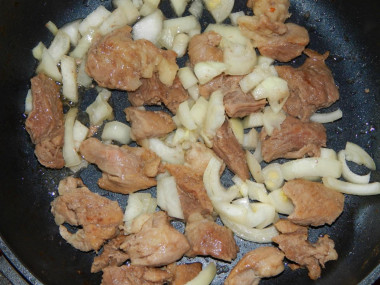
As soon as the moisture from the pan disappears, pour in the vegetable oil. Stir the meat, cover the pan with a lid and fry it over medium heat for about 20 minutes. Then remove the lid, mix the meat. Add the onion, stir and fry for another 15 minutes.
Step 4:
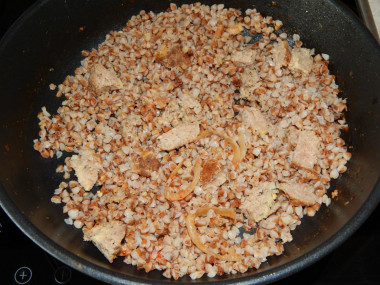
Then put the washed buckwheat on top, gently level it. Fill with water so that it covers the contents of the pan with two fingers. Salt and pepper to taste. Cover the pan with a lid, let the liquid boil in it, then reduce the heat to medium and simmer until the liquid has completely evaporated. Turn off the heat, mix the buckwheat with the meat. And the dish can be served immediately to the table, with fresh vegetables. Enjoy your meal!
Read all the secrets of cooking buckwheat and how to choose it correctly so that the dish is delicious in the article "The usual buckwheat. Do we know everything about her?"
Important! An incorrectly selected frying pan can ruin even the best recipe. All the details on how to choose the perfect frying pan for different dishes read here .
Any oils are useful only until a certain temperature is reached - the point of smoking, at which the oil begins to burn and toxic substances, including carcinogens, are formed in it. How to determine the roasting temperature and choose the best oil for frying, and which is better not to use at all, read here .
Caloric content of the products possible in the composition of the dish
- Melted beef fat - 871 kcal/100g
- Fat beef - 171 kcal/100g
- Lean beef - 158 kcal/100g
- Beef brisket - 217 kcal/100g
- Beef - okovalok - 380 kcal/100g
- Beef - lean roast - 200 kcal/100g
- Beef shoulder - 137 kcal/100g
- Beef - ribs - 233 kcal/100g
- Beef - ham - 104 kcal/100g
- Beef - tail - 184 kcal/100g
- Boiled ham - 269 kcal/100g
- Beef corned beef - 216 kcal/100g
- Buckwheat (whole grain) - 335 kcal/100g
- Dark buckwheat flour - 333 kcal/100g
- Light buckwheat flour - 347 kcal/100g
- Boiled buckwheat - 163 kcal/100g
- Buckwheat - 313 kcal/100g
- Ground black pepper - 255 kcal/100g
- Vegetable oil - 873 kcal/100g
- Salt - 0 kcal/100g
- Onion - 41 kcal/100g

